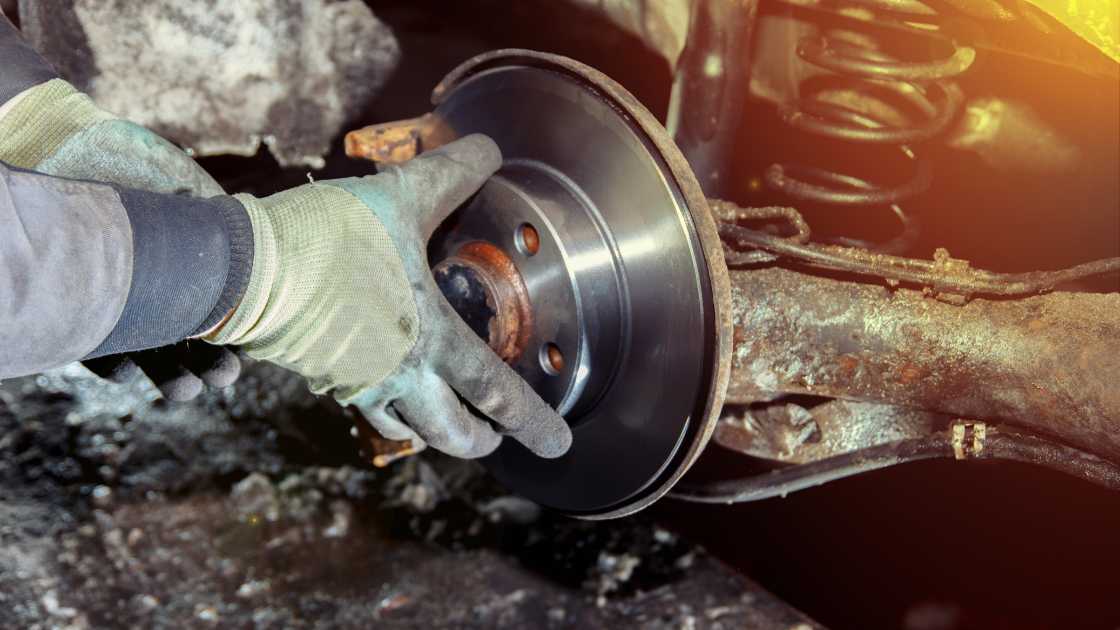
How to Know When Your Brakes Need Replacing: Stay Safe on the Road!
Your car’s brakes are a vital component that ensures your safety on the road. As you drive, your brake system undergoes wear and tear, making it crucial to recognize the signs indicating the need for replacement. Neglecting your brakes can lead to hazardous situations and potential accidents. In this article, we’ll guide you through the key signs that tell you it’s time to replace your brakes. Stay informed and stay safe!
There are 7 Steps to Know When Your Brakes Need Replacing
Squealing or Screeching Noises
One of the most common and unmistakable signs of worn-out brakes is a high-pitched squealing or screeching noise when you apply the brakes. This noise is caused by a metal indicator in the brake pad, designed to alert you that the pad has reached its minimum thickness. Ignoring this warning can lead to further damage to your braking system and reduce your stopping power.
Grinding Sensation
If you hear a grinding or growling noise when applying the brakes, it’s a definite sign that your brake pads are significantly worn. This sound occurs when the brake pad material is completely depleted, and the metal backing plate rubs against the brake rotor. Driving with grinding brakes can cause severe damage to the rotors, resulting in more expensive repairs.
Soft or Spongy Brake Pedal
A healthy brake system should provide a firm and responsive brake pedal. If you notice the brake pedal feels soft or spongy, it could indicate air or moisture in the brake lines or a leak in the brake system. In either case, it’s crucial to have your brakes inspected and repaired promptly to ensure optimal braking performance.
Vibrating Brake Pedal
When you press the brake pedal, it should feel smooth and steady. If you experience a pulsating or vibrating sensation when applying the brakes, it may be due to warped brake rotors. Warped rotors can occur from excessive heat and can affect the even distribution of braking force. Getting the brake rotors checked and, if needed, replaced will restore a smooth braking experience.
Pulling to One Side
If your car tends to pull to one side when you brake, it could be an indication of uneven brake pad wear or an issue with the brake caliper. The caliper is responsible for applying pressure to the brake pads against the rotor. If one side is faulty or worn, it can lead to an imbalanced braking force, affecting your ability to steer and stop safely.
Dashboard Brake Warning Light
Modern vehicles come equipped with a dashboard warning light specifically designed to alert you of potential brake system issues. If this light illuminates, it’s crucial not to ignore it. While it could be triggered by a minor issue, it might also indicate a more significant problem that requires immediate attention from a qualified mechanic.
Unusual Smells
A pungent burning smell while driving or after applying the brakes could suggest overheated brake pads or a dragging brake caliper. Overheating can reduce the brake pad’s efficiency and lead to premature wear. Addressing the issue promptly can prevent costly repairs down the road.
FAQs
What are the signs that indicate my brakes need replacing?
There are several telltale signs that your brakes need replacing. The most common ones include:
- Squealing or screeching noises when you apply the brakes, indicating worn-out brake pads with metal indicators.
- Grinding or growling sensations, signaling that the brake pads are completely worn, and the metal backing plate is rubbing against the rotor.
- Soft or spongy brake pedal feel, which may result from air or moisture in the brake lines or a brake system leak.
- Vibrating brake pedal, a sign of warped brake rotors caused by excessive heat.
- Pulling to one side when braking, suggesting uneven brake pad wear or a faulty brake caliper.
- Dashboard brake warning light illumination, indicating potential brake system issues that require inspection.
- Unusual burning smells, implying overheated brake pads or a dragging brake caliper.
Can I ignore minor brake issues, or should I have them checked immediately?
Minor brake issues should never be ignored, as they can escalate into more significant problems and compromise your safety on the road. Ignoring warning signs like screeching noises, soft brake pedal, or dashboard warning lights can lead to further damage, costlier repairs, and even dangerous situations. Promptly addressing brake concerns will not only ensure your safety but also prevent potential damage to other brake components, saving you money in the long run.
How often should I replace my brake pads and rotors?
The lifespan of brake pads and rotors can vary depending on driving habits, road conditions, and the quality of brake components. As a general guideline, brake pads typically need replacement every 30,000 to 70,000 miles (48,000 to 112,000 kilometer’s), while rotors may last longer and require replacement every 50,000 to 70,000 miles (80,000 to 112,000 kilometer’s). However, it’s essential to refer to your vehicle’s manufacturer recommendations and consult a qualified mechanic to determine the best replacement intervals for your specific car model. Regular brake inspections during routine maintenance visits will also help you stay ahead of any potential brake issues and ensure your brakes remain in optimal working condition.
Conclusion
Your car’s brakes are an essential safety feature that should never be neglected. Regularly inspecting and replacing brake components when necessary will not only keep you and your passengers safe but also extend the lifespan of your vehicle’s braking system. If you notice any of the warning signs mentioned in this article, don’t delay – schedule a professional inspection and get your brakes replaced as needed. By staying vigilant and taking care of your brakes, you’ll enjoy peace of mind and a smoother, safer driving experience on the road.





